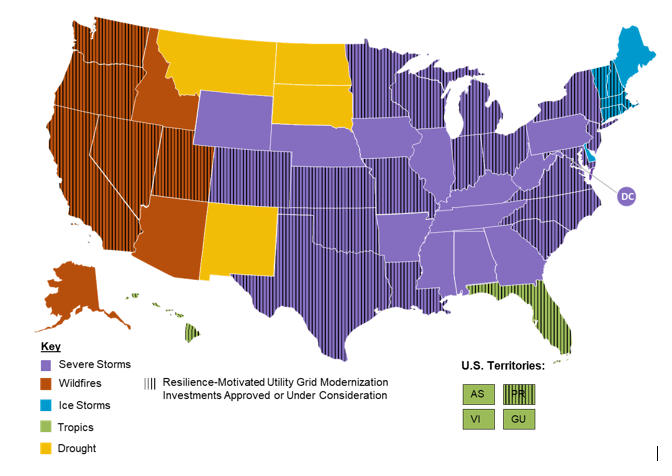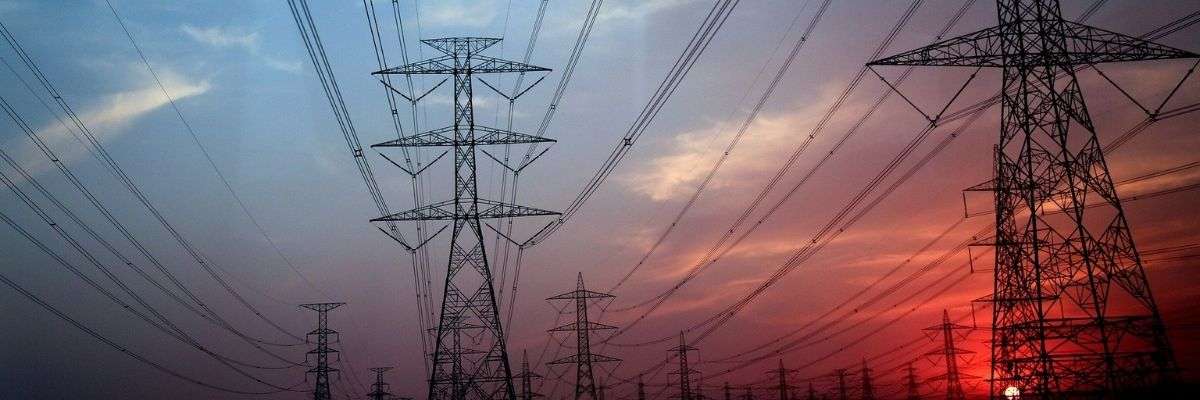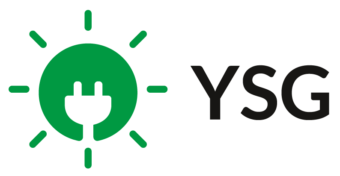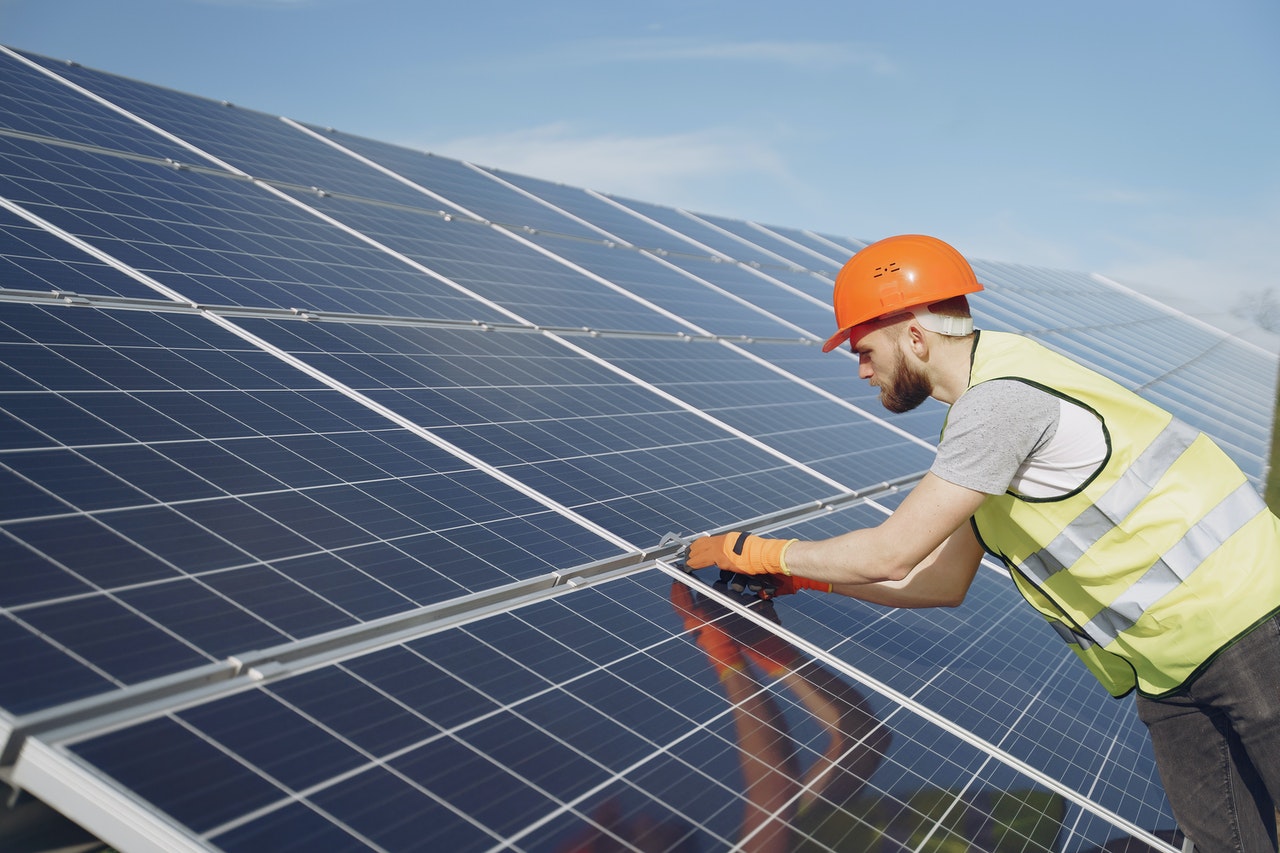In August of this year, the Intergovernmental Panel on Climate Change (IPCC) Sixth Assessment Report highlighted the climate issues facing our world. The report outlined a future in which climate events would become both more intense and more frequent. Given the weather events we have witnessed in the United States in recent years—record-breaking storms, wildfires, and flooding—the information contained in the IPCC Sixth Assessment Report did not come as a surprise. With the electricity grid under more pressure than ever before, ‘resiliency’ has quickly become a key term in the energy sector.
Grid Resiliency in 2021
It’s fair to say that the resiliency of our energy grid has been put to the test so far in 2021. One of the most notable energy stories of the year was the February winter storm in Texas that left 70% of residents in the dark. Just a few months ago, in August, Hurricane Ida resulted in a widespread blackout for 1 million Louisiana residents, and led to historic flooding in New York. Wildfire season was devastating once again, leading utilities to announce a series of planned outages for millions of residents with the intention of mitigating the threat of wildfires. With climate events like these set to continue in the near future, grid resiliency will be vital in order to ensure a steady supply of electricity across the U.S. In fact, utilities are projected to invest approximately $1 trillion in the power grid between 2020 and 2030.
Climate Risks and Resilience-Motivated Grid Modernization Investments in the United States
The graphic below, courtesy of DSIRE Insight, uses information from the National Oceanic and Atmospheric Administration to display the biggest climate threats for each state, as well as illustrating which of those states are considering, or have approved, investments in utility grid resiliency.
How are State Regulators Responding to the Increased Threat of Climate Events?
State regulators across the country are exploring a number of different avenues to confront and combat the threat posed by climate events.
Deployment
Many states are investing in the increased deployment of distributed energy resources (DERs) in order to diversify their energy generation mix and reduce grid dependency on single fuel types. DERs like combined heat and power systems, renewable sources, and storage provide reliability for grid operators, as well as offering a key supply source when larger generators go offline. DERs can also alleviate grid system congestion, avoiding or delaying the need for the construction of costly infrastructure. Storage, in particular, is an important piece of the puzzle for states seeking methods to counteract climate-related risks, as energy storage systems can offset risks around fuel supply and provide grid services.
Integration & Monitoring
States are also making significant investments into system improvements including:
- Advanced Metering Infrastructure
- Advanced Distribution Management Systems
- Distributed Energy Resource Management Systems
- Demand Side Management
Systems such as those outlined above allow utilities to optimize the integration of DERs, detect & trace outages and voltage issues, and assist in reconfiguration during outages. Smart meters have become the most common grid modernization investment in recent years, as they provide a number of benefits which help to prevent outages during climate events:
- Time-based pricing
- Improve control over consumption
- High usage alerts
Microgrids
Microgrids are also seeing increased investment, as states seek to further integrate DERs. Microgrids are anchored by on-site generation and so are capable of operating in “island mode” when the larger system is affected by weather events. A number of microgrid policies have begun with pilots to support critical facilities such as hospitals, fire departments, and police stations, before moving onto the support of residential and commercial/industrial customers.
Hardening
Another common investment is grid hardening, which is intended to make transmission & distribution infrastructure like lines, poles, towers, transformers, and switchgear less susceptible to climate events. Tree trimming, pole inspection & upgrade, and smart grid technology installation are examples of hardening which help to protect key infrastructure and minimize the impact of any potential outage.
Groundwork
A number of state regulators, alongside utilities, are incorporating consideration for climate events into their distribution planning and initiating studies in order to model future climate impacts and protect vulnerable communities.
Did you know you can tackle the threat of climate events yourself? Going solar is a simple way to reduce your carbon footprint—making a positive contribution to our world while saving money on your energy bills at the same time. Call the office at 212.389.9215 or send us an email today to learn how much you could save with solar.
YSG Solar is a project development company responsible for commoditizing energy infrastructure projects. We work with long-term owners and operators to provide clean energy assets with stable, predictable cash flows. YSG's market focus is distributed generation and utility-scale projects located within North America.
Sources:
https://www.dsireinsight.com/blog
https://www.ncei.noaa.gov/access/metadata/landing-page/bin/iso?id=gov.noaa.nodc%3A0209268

